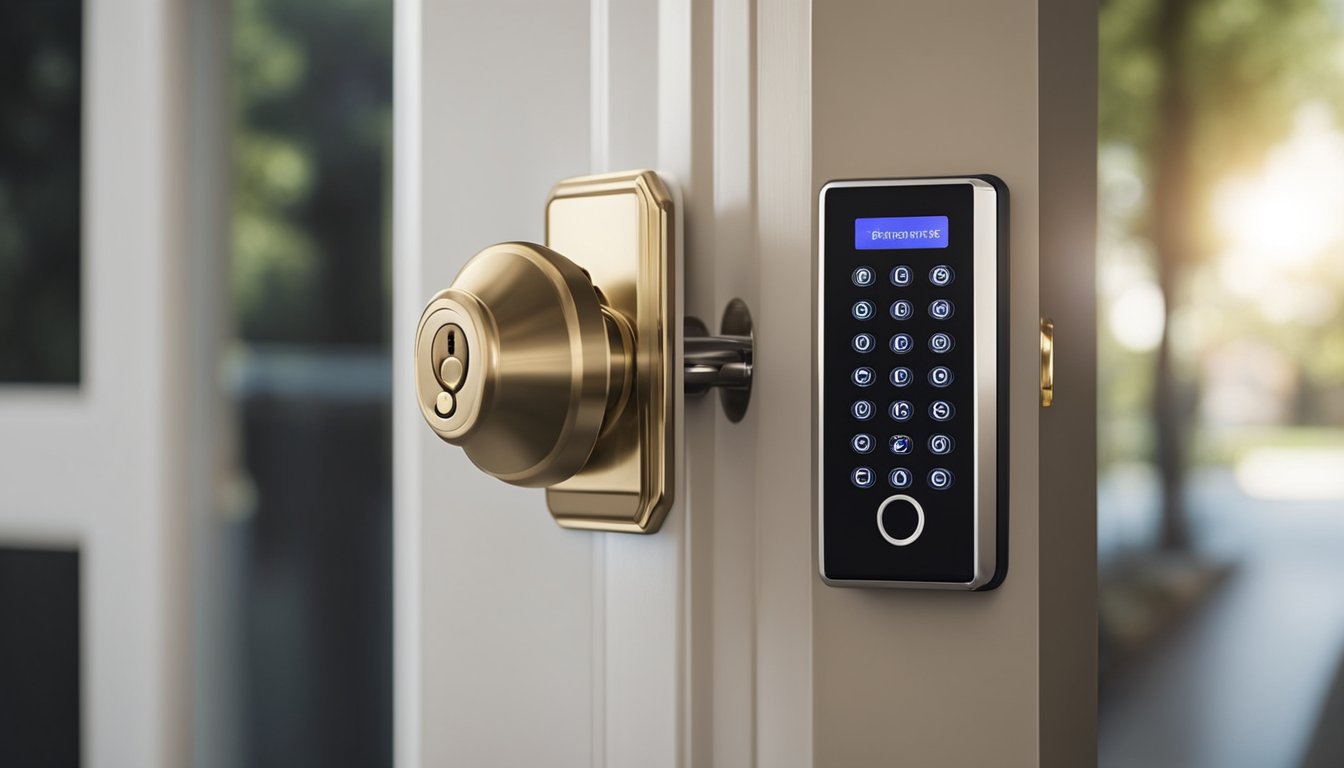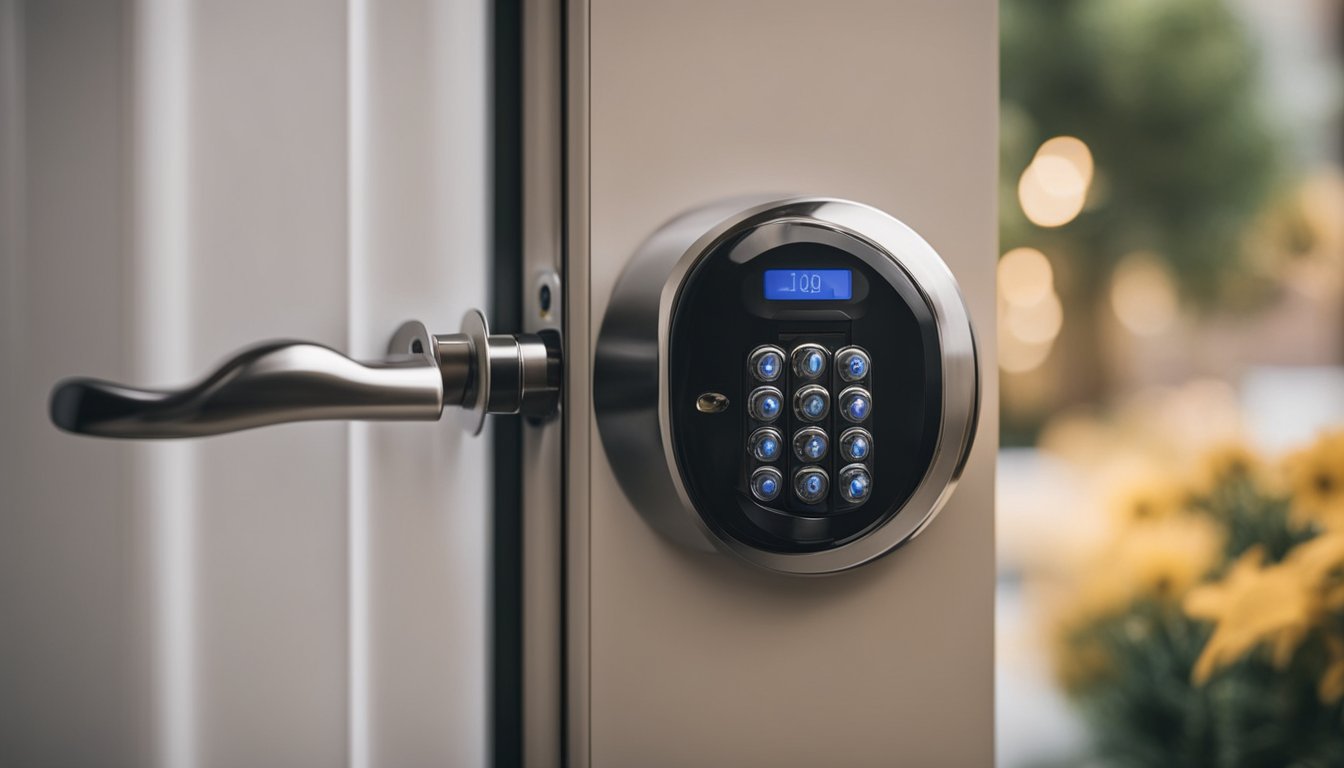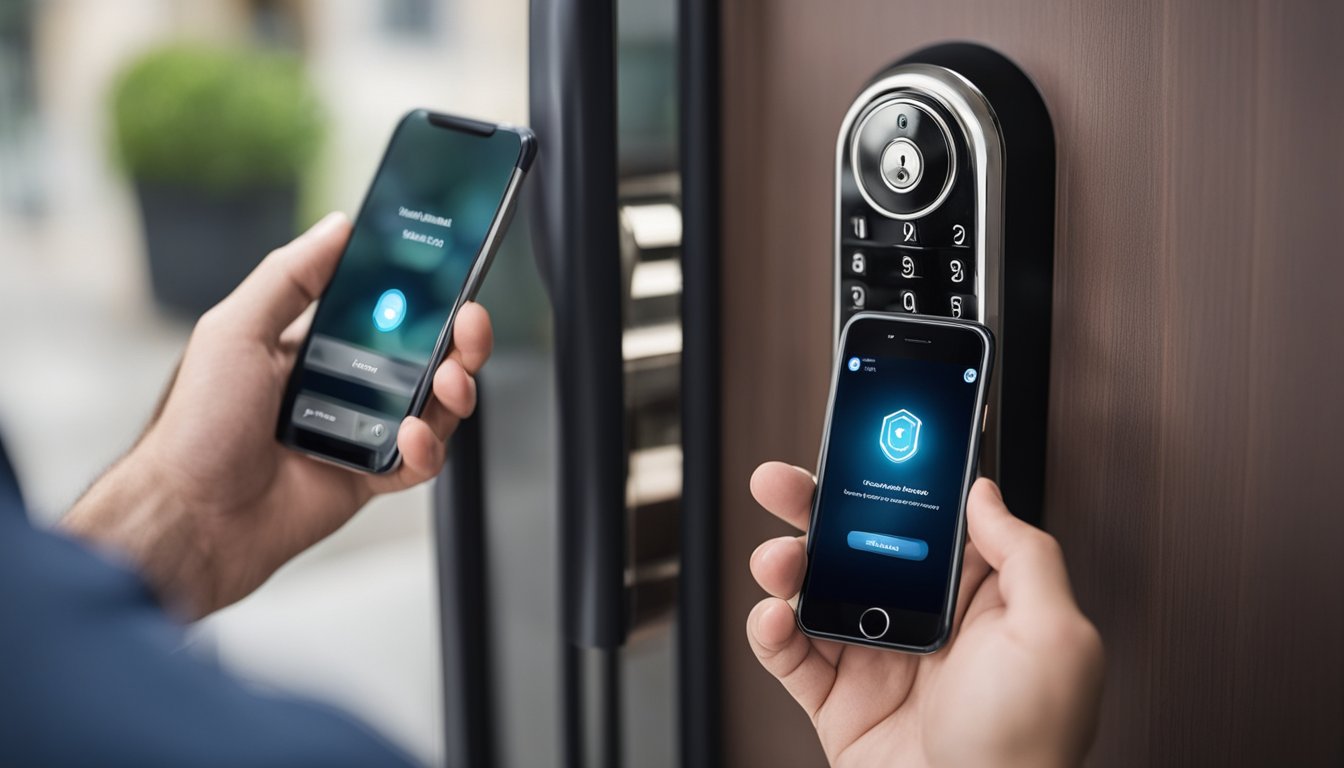Late updated: 14 Aug 2024 12:08
Written by: Elena Prescott
Improving Security Using Keyless Door Locks: Modern Solutions for Enhanced Protection
Improving Security Using Keyless Door Locks

In today's technologically advanced world, securing our homes has never been easier and smarter. Keyless door locks provide enhanced security by eliminating the risk of losing traditional keys and preventing unauthorised access. These innovative systems allow us to control who enters our homes via a smartphone or other connected devices, offering both convenience and peace of mind.
Many of the top smart locks on the market, such as those from Yale and Nuki, integrate seamlessly with existing smart home systems. They utilise state-of-the-art IoT-enabled sensors, allowing features like remote unlocking and issuing virtual keys to guests. This not only enhances security but also provides a convenient way for us to manage entry without being physically present.
Considering the ease of installation and ongoing maintenance, keyless door locks are an excellent investment for anyone looking to upgrade their home security. With simple software updates and minimal mechanical upkeep, these locks ensure that our homes remain protected with the latest digital advancements.
Key Takeaways
- Keyless door locks offer enhanced security and convenience.
- Smart locks like Yale and Nuki integrate well with smart home systems.
- Installation and maintenance are straightforward and user-friendly.
Understanding Keyless Door Lock Technology
Keyless door locks offer enhanced security and convenience by replacing traditional keys with advanced technologies. They integrate seamlessly with smart home systems, making our homes smarter and more secure.
Types of Keyless Entry Systems
Keyless entry systems come in various forms, each utilising different technologies to secure access. Keypad entry employs a numeric pad where users input a secret code to unlock the door. Codes can be easily changed, enhancing security.
Smart locks use wireless technologies like Bluetooth, Wi-Fi, or NFC to communicate with authorised devices such as smartphones, key fobs, or keycards. We can control these locks remotely through smartphone apps, making them highly convenient.
In addition, biometric systems like fingerprint scanners provide layers of security by using unique physical characteristics for access. This form of authentication ensures only authorised individuals can enter, enhancing safety.
The Mechanics Behind Lock Security
The security of keyless locks centres on both hardware and software components. Mechanically, these locks still employ strong, durable materials to deter physical tampering. The stronger the lock's materials, the better it can resist forced entry.
From a technological standpoint, keyless locks rely heavily on encryption and two-factor authentication to protect access codes and biometric data. Communication between the lock and authorised devices is typically encrypted, preventing interception by external threats.
Our locks often feature smartphone apps that provide real-time notifications, allowing us to monitor who's entering or exiting our property. This connectivity fortifies our security system through constant vigilance.
Compatibility and Integration
Ensuring compatibility with existing smart home devices and home automation systems is crucial for the effective use of keyless locks. Most modern smart locks support Wi-Fi, Bluetooth, and Z-Wave protocols, enabling seamless integration with a variety of platforms.
For instance, we can connect our smart locks to devices like security cameras, alarm systems, and even voice-activated assistants. This integration enables us to control multiple aspects of home security from a single interface.
Compatibility extends to various smart home ecosystems, providing us with the flexibility to choose devices that best fit our security needs. Whether we prefer using a smart hub or managing everything through a smartphone app, keyless locks can adapt to our preferences.
Installation, Maintenance, and Best Practices

Proper installation and maintenance of keyless door locks ensure they function efficiently while providing robust security. Additionally, addressing potential vulnerabilities is crucial for maintaining peace of mind.
Steps for Secure Installation
Gather the Right Tools: Ensure you have all necessary tools like screwdrivers, a measuring tape, and possibly a drill. Some keyless locks may include additional tools.
Prepare the Door: Remove any existing hardware. Clean the surface and verify the door is correctly aligned to avoid issues during installation.
Install the Exterior Unit: Align the keypad or exterior unit with the pre-drilled holes. Pass the electronic cable through the door if required and secure with screws.
Attach the Interior Unit: Connect the electronic cable to the interior unit. Align it with the latch mechanism and secure with screws, ensuring all parts are tightly fastened.
Test the Lock: Before finalising, test the lock to see if the keypad and mechanical parts function smoothly. Make any necessary adjustments.
Maintaining Your Keyless Lock
Regular Cleaning: Clean the keypad regularly to prevent build-up of dust and grime. Use a soft cloth and a mild cleaning agent.
Battery Replacement: Regularly check the battery status. Replace batteries typically every 6 months to a year. Many locks have an indicator to alert you when power is low.
Firmware Updates: If your lock connects to an app or smart home system, ensure firmware and security patches are up-to-date to protect against vulnerabilities.
Inspect for Wear and Tear: Periodically inspect the lock for signs of wear. Check for loose screws or any signs of damage. Rectify issues immediately.
Security Considerations and Troubleshooting
Addressing Vulnerabilities: Regularly update security settings and PIN codes. Implement two-factor authentication if available.
Emergency Plan: Always have a contingency plan in case of power failure. Many keyless locks have a physical key override or backup power options.
Troubleshooting Common Issues: Address unresponsive keypads by checking for loose connections or replacing the keypad module. Incorrect code entries require careful re-entry or resetting of the code.
Professional Help: In case of complex issues, do not hesitate to contact a locksmith or professional installation service to ensure your lock remains secure.
By following these practices, we can ensure our keyless door locks provide optimal security and reliability.
Frequently Asked Questions

Keyless door locks offer both advanced security and modern convenience. Here, we address common queries about their effectiveness, potential weaknesses, and installation process.
Can keyless door locks be susceptible to hacking?
Keyless door locks, like any digital device, can be targeted by hackers. Manufacturers implement encryption and security protocols to mitigate risks. Regular updates and strong passwords are essential for enhancing security.
What are the potential drawbacks of installing keyless door locks?
Potential drawbacks include reliance on battery power, which requires regular monitoring. There's also the risk of technical malfunctions. Additionally, some users may find the need for smartphone-based controls inconvenient.
How do keyless door locks hold up against traditional lock-and-key systems in terms of security?
Keyless door locks can offer superior security features compared to traditional locks. They include options like biometric verification and real-time access logs. Traditional locks, however, are immune to electronic hacking.
What are the advantages and disadvantages of using keypad door locks?
Keypad door locks provide easy access without physical keys and can be easily shared with guests. However, if the entry code is forgotten or discovered by unauthorised persons, it may pose security issues.
Are smart locks effective in deterring burglars and unauthorised entry?
Smart locks can deter unauthorised entry by providing advanced security features like remote monitoring and alerts. They allow homeowners to control access via smartphones, adding a layer of security oversight.
Is the installation process for keyless door locks user-friendly for homeowners?
Many keyless door locks are designed with user-friendly installation in mind. They often come with detailed instructions and require basic tools. However, for optimal security, professional installation is recommended.
